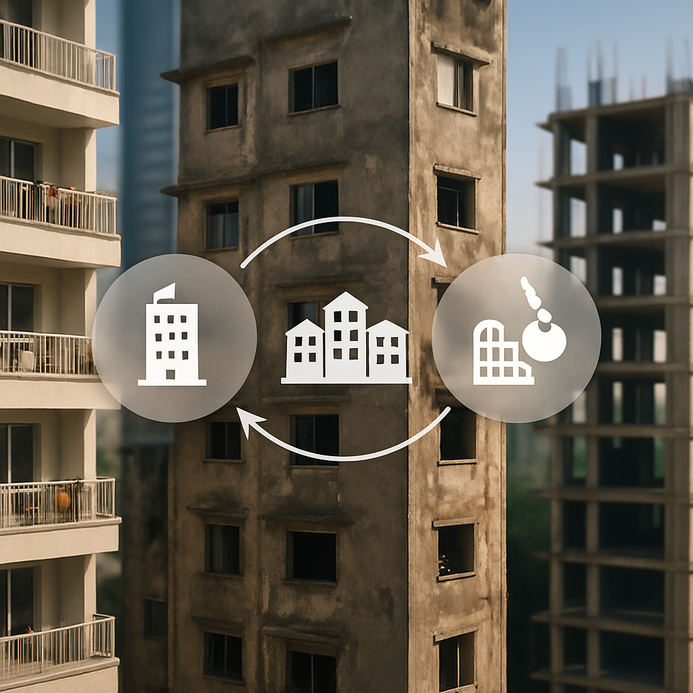A Practical Guide To Electric Vehicle (EV) Charging Station Installation
Introduction to EV Charging in Apartment Complexes
Electric vehicles (EVs) are here, and they’re changing the game when it comes to urban transportation. It’s becoming super clear that apartment complexes need to step up their game with EV charging infrastructure. Did you know over 6 million electric cars were sold globally in 2021? That’s a massive shift towards greener transportation, and it’s projected to hit over 20 million by 2025. Check out the full scoop in this study.
In bustling cities, parking is a hot commodity. So having EV charging stations close by? Essential. Developers can really boost their property’s appeal by offering charging solutions that cater to the growing number of EV owners. A recent survey found that 80% of renters consider access to EV charging a make-or-break factor in choosing where to live. Apartments with charging options see higher occupancy rates and possibly a nice bump in property value too. For more on this, see this article.
Before diving into the installation, property managers should gauge resident interest and assess the necessary power supply for chargers. A single charging point generally needs around 40 amps to run smoothly. Here’s a handy table showing the costs for various charger types suited for apartment living:
| Charger Type | Installation Cost (Approx.) | Charging Speed | Ideal Use Case |
| Level 2 Charger | $2,000 – $5,000 | 10-25 miles per hour | Residential use |
| DC Fast Charger | $10,000 – $40,000 | 60-80 miles in 20 minutes | Commercial use, quick charging |
| Level 1 Charger | $500 – $1,500 | 3-5 miles per hour | Occasional use in common areas |
Building a solid EV charging infrastructure isn’t just a nice-to-have; it’s a must for modern apartments. By aligning investments in charging stations with what residents want, property managers can boost overall living experiences and promote sustainability. Craving more insights? Check out this thorough review of advanced charging technologies here.
Want to know how EV infrastructure impacts property value? The details are worth a look. Plus, for tips on property management in this evolving landscape, check out articles that dive into enhancing amenities and resident engagement.
Understanding the Types of EV Charging Stations
So, there are three main types of EV chargers: Level 1, Level 2, and Level 3 (or DC Fast Charging). Knowing the ins and outs of these options can really help you decide what to install in your apartment complex.
| Type | Charging Speed | Typical Voltage | Use Case |
| Level 1 | 2-5 miles of range per hour | 120V | Home charging |
| Level 2 | 10-60 miles of range per hour | 240V | Public and residential charging |
| Level 3 (DC Fast Charging) | 150-350 miles of range per hour | 480V | High-speed public charging |
Level 1 Charging Stations are your basic, slow chargers. They work with a standard 120V outlet, perfect for overnight charging at home. But, if you’ve got heavy EV users, they might not cut it.
Level 2 Charging Stations are more popular due to their faster charging speeds. They can charge an EV in a few hours, making them ideal for big apartment complexes with multiple cars needing access. These require a 240V system to get outta that slow lane.
Level 3 (DC Fast Charging) is the big dog on the block. They offer rapid charging, allowing vehicles to recharge in just a few minutes. Sure, they come with a higher price tag, but in urban settings where EV usage is booming, they’re becoming vital.
When you’re scouting for EV charging near me, consider how the different stations can impact your installation decisions. Depending on residents’ needs, going for Level 2 and Level 3 could really take their experience up a notch.
Want more info on how EV charging fits into the future? Head to Nature for some cool insights on tech advancements in this area. Also, the Associated Press gives the lowdown on grants available to expand the EV charging network.
For details on property amenities and their potential value, check out articles like this one discussing the impact of charging stations.
Evaluating the Costs of Installation
When it comes to installing EV charging stations, any apartment complex looking to attract electric vehicle owners needs to understand the costs involved. This way, property managers can plan their budgets smartly.
1. Equipment Costs
The price for chargers can vary a lot depending on what you’re going for. Level 2 charging stations are popular for residential setups, sitting in the $300 to $2,000 range. But those high-end fast chargers? They can hit $10,000 or more.
| Type of Charger | Price Range |
| Level 1 | $200 – $600 |
| Level 2 | $300 – $2,000 |
| DC Fast Charger | $10,000+ |
2. Installation Labor Costs
Labor usually takes a big bite out of the installation budget. Expect to shell out around $50 to $100 an hour, depending on the local market. Just keep in mind, the number of units being installed and wiring complexity can swing those labor costs.
3. Electrical Infrastructure Upgrades
You might need to upgrade your property’s electrical setup to support those new chargers. Costs for these tweaks typically fall between $1,000 and $10,000, influenced by what you’ve already got wired and how your local codes look.
4. Incentives and Rebates
Good news! Investing in EV stations can have a silver lining with tax incentives. There are several federal and state programs that could offer nice rebates, like federal tax credits that can cover up to 30% of installation costs. These incentives can nudge more complexes to hop on the EV charging bandwagon.
For more insights, check these resources out:
– Reuters – Less than 400 EV Charging Ports Built Under $75 Billion US Infrastructure Program
– AP News – A Comprehensive Look at EV Charging Station Developments
– Kiplinger – Federal Tax Credit for Electric Vehicle Chargers
Investing in EV charging infrastructure might boost tenant satisfaction and property value. For more tips on property management and enhancements, take a look at articles about optimizing community facilities, like this guide or this investment strategy.
So, you’re ready to put in those EV charging stations at your apartment complex. First up? You gotta navigate the Apartment Owners Association (AOA) approvals and local laws. Understanding this stuff can make or break a smooth installation.
Key AOA Approvals
The AOA has a say in any changes to shared spaces. Here’s how to get started:
1. Proposal Submission: Draft up a detailed proposal. Include how many charging stations you want, where they’ll go, and what it’ll cost.
2. AOA Meeting: Get on the agenda for the next AOA meeting to discuss this proposal.
3. Voting: Plan for an HOA vote; usually, you’ll need a majority thumbs-up.
4. Documentation: Gather necessary paperwork, like certification for the charging equipment and proof that you comply with electrical safety codes.
Local Regulations
Next, hitting local regulations is non-negotiable:
– Permits: You’ve got to snag the right installation permits from local authorities.
– Zoning Laws: Double-check your installation meets zoning rules for the area.
– Accessibility Standards: Make sure your charging stations are accessible to all residents.
| Requirement | Details |
| Proposal Submission | Detailed proposal to be submitted to the AOA |
| Meeting Request | Discuss at the next AOA meeting |
| Voting Requirement | Majority approval typically required |
| Permits | Necessary permits from local authorities must be obtained |
| Compliance Codes | Meet local electrical and safety regulations |
For more on EV charging regulations, swing by the U.S. Department of Energy here and the National Conference of State Legislatures here.
Adding EV charging stations can significantly boost property value. For an even deeper dive, check our piece on the value of charging stations. Plus, discover zoning and permit impacts on properties through our article on RERA regulations.
Being aware of these compliance steps can help ensure that adding EV charging stations to your apartment complex goes off without a hitch.
Step-by-Step Guide to Installation
Getting EV charging stations installed in your apartment complex ain’t just a walk in the park. It takes careful planning and execution. Here’s your handy step-by-step guide to smooth sailing through the installation, so those charging stations are just a hop away for residents.
1. Assess Demand and Site Planning
Kick things off by figuring out if there’s a real demand for EV charging in your community. Don’t shy away from surveys; ask residents if they’re interested in charging stations. Then, scout out the best spots for charging points—easy access is key.
| Factor | Considerations |
| Site Location | Proximity to parking and utility resources |
| Power Source | Availability of existing electrical infrastructure |
| User Flow | Accessibility for residents and visitors |
2. Secure Approvals
Once you’ve got locations pinpointed for your charging stations, it’s time to get the approvals locked in. Generally, you’ll want permission from the HOA or property management team. Make sure you’re following local building codes, and don’t hesitate to lean on experts for advice.
3. Choose Charging Equipment
Pick EV chargers that fit your residents’ needs. Think about how long each charge will take and whether they’ll work with various models. Research available level 2 or DC fast charging options, and stay informed about potential tax incentives through articles like this one.
4. Installation Process
Make it a point to hire a certified electrician for the install. They’ll follow the manufacturer’s guidelines and local safety codes to the letter. Depending on your existing setup, they might need to make upgrades to handle the load from those chargers.
5. Testing and Integration
After installation, do some testing to make sure all stations are up and running smoothly. Also, let residents know about the new chargers! Provide info on how to use them, and this is a great chance to mention nearby EV charging resources to enhance community accessibility.
6. Monitor and Maintenance
Set up a maintenance plan to keep things running well. Regular checks on the charging stations are key, and don’t forget to fix any issues quickly. It could be beneficial to have software in place that lets users see charging status in real time.
For more on how EV charging can uplift communities, check out this study about the economic perks of EV stations.
This guide should set you up well for adding EV charging stations that cater to electric vehicle owners, boosting property values while also championing sustainability. For more resources, consider this article on the value of EV charging stations in apartments.
FAQ
1. What types of EV chargers are recommended for apartment complexes?
Level 2 chargers are typically recommended for residential use, while DC Fast Chargers are ideal for quick public charging.
2. Do I need to get special permissions to install EV charging stations?
Yes, you need to secure approvals from the Apartment Owners Association (AOA) and follow local zoning laws and electrical safety regulations.
3. What are the costs involved in installing EV charging stations?
Costs include equipment prices (ranging from $200 to over $10,000), installation labor, potential electrical infrastructure upgrades, and considerations for incentives and rebates.
4. How can I assess the demand for EV charging stations in my building?
Conduct surveys among residents to gauge interest and determine how many charging stations may be necessary.
5. How often do EV charging stations need maintenance?
Regular checks are recommended to ensure they are functioning properly, and maintenance should be done promptly to resolve any issues.













